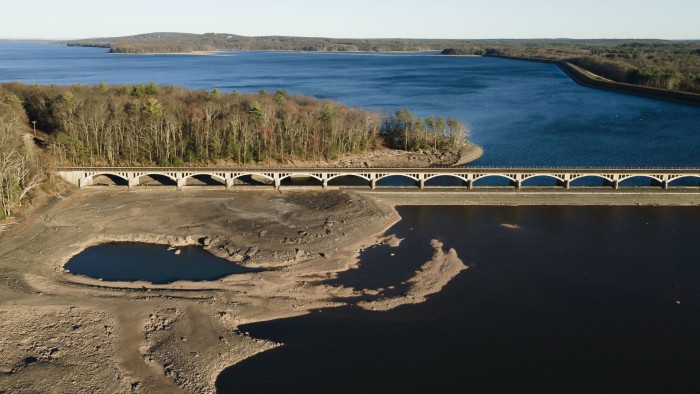Stay informed with free updates
Simply sign up to the Climate change myFT Digest — delivered directly to your inbox.
The northeastern US has suffered its worst November drought since 2016, prompting wildfires across the region and pushing New York City into its first drought warning for two decades.
This was in spite of rainfall towards the end of last week, which eased conditions but was not enough to replenish reservoirs and lift the region from long-term drought.
The southern section of the state of New York has been in severe drought for more than a week, affecting more than 15.3mn New Yorkers, while close to 9mn New Jersey residents were living in areas of drought over the past week, according to the US Drought Monitor.
New Jersey endured its driest October since records began in 1895, with more than half of the state suffering from “extreme drought” conditions.
Last week, New York mayor Eric Adams put the city under the warning, the last step before mandatory water restrictions come into force, after weeks of unseasonably dry weather.
The state more broadly was put under a drought watch by the governor Kathy Hochul, who blamed a “historic shortage of rainfall”.
“Recent unseasonably warm weather and lack of precipitation have led to dry conditions for many counties in New York,” said Hochul. “Across the state, local water restrictions and educating New Yorkers about how to help conserve water resources are crucial steps to help prevent a more severe shortage until conditions improve.”
The dry weather has helped spark hundreds of wildfires across New York, New Jersey and Connecticut, with New York City experiencing more than 270 brush fires this month, including in Prospect Park, in Brooklyn, and Inwood Hill Park in Manhattan.
New York State was forced to order a voluntary evacuation order for people affected by a 5,000 acre fire on the border of New York and New Jersey last week.
Widespread drought has been linked by scientists to global warming, along with other extreme weather events such as excessive rain and flooding.
The global temperature rise is expected to hit an average of 1.55C above pre-industrial levels this year, according to scientists from the European earth observation agency, Copernicus.
Current government policies globally would lead to 3.1C of warming this century, the UN’s environment programme recently reported. The Intergovernmental Panel on Climate Change, made up of scientists from across the world, has estimated the planet has already warmed by at least 1.1C since pre-industrial times.
Read the full article here

